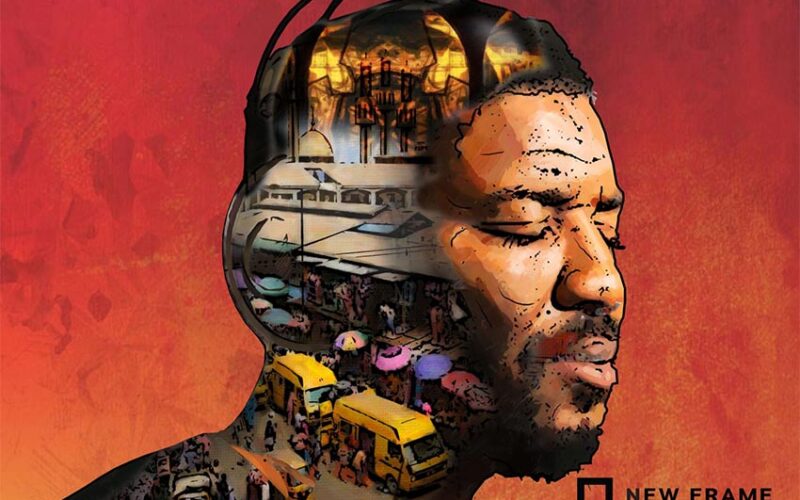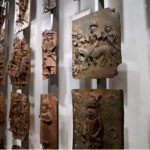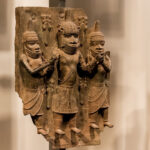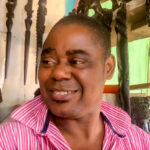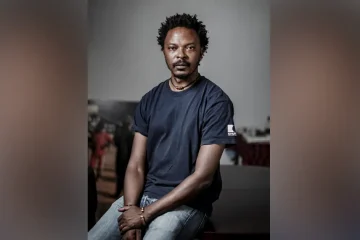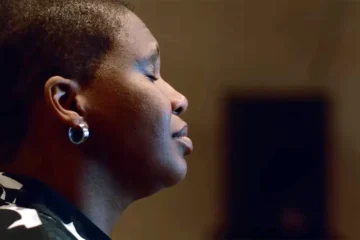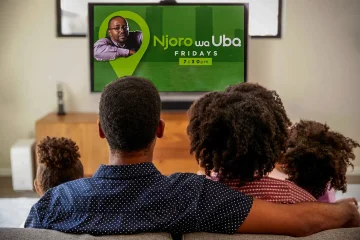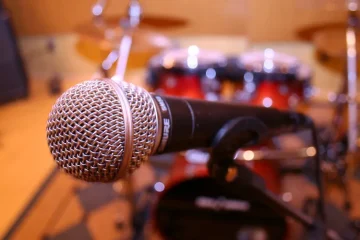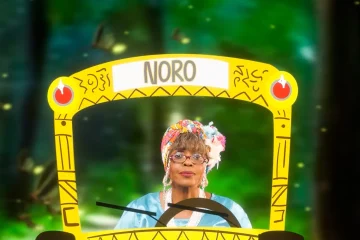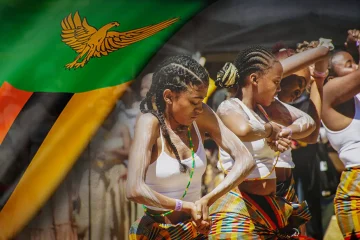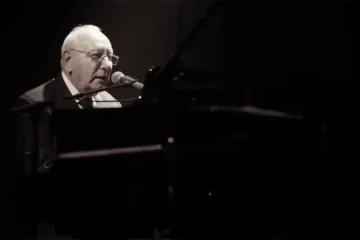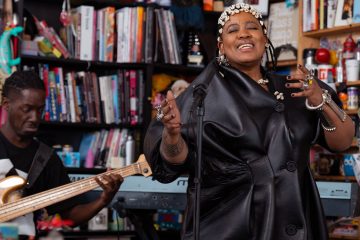LLOYD GEDYE
THE artist has released a debut album after more than a decade of sound installations, incorporating his recordings from the streets of the Nigerian city into his new work.
At the end of last year, 200 missing posters were dotted around the German city of Dresden. However, they weren’t for a missing person but for the Benin Bronzes.
The city’s Museum für Völkerkunde holds five pieces from the former royal palace of Benin, which British soldiers looted in 1897, and the missing posters were the work of Nigerian sound and visual artist Emeka Ogboh. In an interview with the ArtNet website about the inspiration for the public installation, Ogboh reaffirmed that nobody is “exempt” from the repercussions of colonialism. “As long as issues of agency, ownership and freedom continue to exist, society must act as a whole to repatriate artefacts that are simply not theirs,” Ogboh said.
The A-Ton label, a subsidiary of Ostgut Ton in Germany, released Ogboh’s debut album 17 days after the Dresden installation, on 15 January.
Titled Beyond the Yellow Haze, it is a mesmerising work that combines field recordings, found sounds, ambient electronics, hand percussion and dub techno. It leaves the listener wondering why, in a career that has already spanned more than a decade, Ogboh is only releasing his first album in 2021.
Ogboh, who has been a resident of Berlin for the past six years, comes from Lagos in Nigeria and the city is ever-present in his work. Born in 1977, Ogboh studied graphic design before becoming interested in sound art in 2008 after a media class at the Egyptian Fayoum Art Center’s winter academy with Austrian multimedia artist Harald Scherz.
Ogboh was inspired the following year when a friend who lived in Ajuba called, hoping to pay him a surprise visit. Ogboh foiled the surprise by recognising the sounds of Lagos in the background.
“In a sense, that phone call opened my ears to the uniqueness of the sounds of my city,” Ogboh told fellow Nigerian, art historian and curator Ugochukwu-Smooth Nzewi in a 2013 interview for the website Africa is a Country. Ogboh was soon roaming Lagos, recording the sounds of the city, creating installations that explore the soundscapes of life and the economic and colonial forces that have an impact on it, which he would present at the Lagos African Artists’ Foundation.
Lagos, the hypervisual city
In the Africa is a Country interview, Nzewi says the “syncopated cries of street and highway hawkers, yelling bus conductors, the impatient bleats of car and bus horns, and hoards of people in constant motion to be found in Ogbah’s work captures the maddening hypervisuality of Lagos”.
Lagos by Bus, for example, is a recording of passengers travelling through the city using the yellow molue buses and danfo minibuses, and becomes an interrogation of how the city functions from day to day. Similarly, a recording in 2014 of football fans’ reactions to a power cut during one of Nigeria’s matches at the Fifa World Cup becomes a critique of the government’s failure to deliver municipal services.
In interviews since he presented Lagos by Bus, Ogboh has spoken about how the introduction of a new bus system in Lagos has completely altered the soundscape of the city.
Digital displays on the new buses have negated the old system whereby drivers used to call out the names of each stop. The old audio map of the city has been made redundant. Ogboh has spoken at length about how gentrification and infrastructure development in Lagos have led to bans on hawkers, which immediately altered the soundscape of the city.
In this context, his work has taken a historical documentary aspect, something he did not anticipate when he began making sound art.
The “hypervisuality of Lagos” expressed in Ogboh’s work has made for some strange reactions from audiences when it has travelled outside of Nigeria. He told Nzewi that in Cologne, Germany, someone broke one of the installation’s loudspeakers and the police were called because the sounds were felt to be a nuisance.
While Ogboh’s sound installations have travelled the world’s museums and galleries – with pit stops at the Venice Biennale, London’s Tate Modern, New York’s Africa Centre and Washington’s National Museum of African Art – his work has also graced libraries, casinos and the infamous Berghain nightclub in Berlin.
It was the Berghain installation that led to Beyond the Yellow Haze, a fascinating cross-fertilisation of sound art and club music. The recordings from the album were originally included as part of Ogboh’s 2018 exhibition at Galerie Imane Farès, titled No Condition Is Permanent, and are now seeing commercial release after a chance meeting with the A-Ton label at the Berghain exhibition.
https://youtube.com/watch?v=bcz6sURb9m4%3Fversion%3D3%26rel%3D1%26showsearch%3D0%26showinfo%3D1%26iv_load_policy%3D1%26fs%3D1%26hl%3Den-ZA%26autohide%3D2%26wmode%3Dtransparent
With all but one of the tracks on the album clocking in at between seven and 12 minutes, the reward from Ogboh’s debut lies in the journey his sound art pieces take to reach their ultimate conclusion.
The nine and a half minutes of Everydaywehustlin begin with something one could have found on Warp Records’ landmark Artificial Intelligence compilation, released in 1992. But it doesn’t stay there long. After two minutes, the fragmented rhythm and bleeps give way to a minimalist dub techno form reminiscent of German producers such as Mark Ernestus and Ricardo Villalobos. Around the six-minute mark, the piece begins to morph again, sounding like something from dBridge’s Exit Records label, which releases experimental breakbeat forms.
Club music and chatter
However, this description only acknowledges the album’s club music inspiration. While this shapeshifting electronic creation is working its magic, the listener can hear fragments of conversation, melodies of car hooters, ringing phones and metal percussion. The subtle shifts in how these Lagos-recorded sound elements become dominant or subservient as the piece progresses is another crucial element in the album’s success.
Palm Groove opens with the sound of rain and distant rumbling traffic. A voice can be heard singing a favourite tune and then thunder roars in, accompanied by unsettling synths and cars hooting that shimmer in the distance like ghosts of a dub melody. The overall effect is in some ways reminiscent of the work of Bristol post-punk maverick Mark Stewart’s work with Mark Stewart + Mafia in the 1980s.
The almost eight-minute Lekki Aiah Freeway, a clear reference to the unarmed protesters the Nigerian army massacred at the Lekki Aiah Toll Gate on 20 October 2020, is a dread-filled dub techno piece with snatches of conversation, dubbed-out car hooter melodies and washes of synths buried deep in the mix.
In a 2017 interview filmed for the Tate Modern, Ogboh speaks about how sound’s ability to transport the listener is what he finds so powerful. “The reaction goes right into your bones,” he says. “It will follow you home.” And that’s exactly what Beyond the Yellow Haze achieves. The album remains with the listener days after the last listen and, by proxy, so does the city of Lagos.

